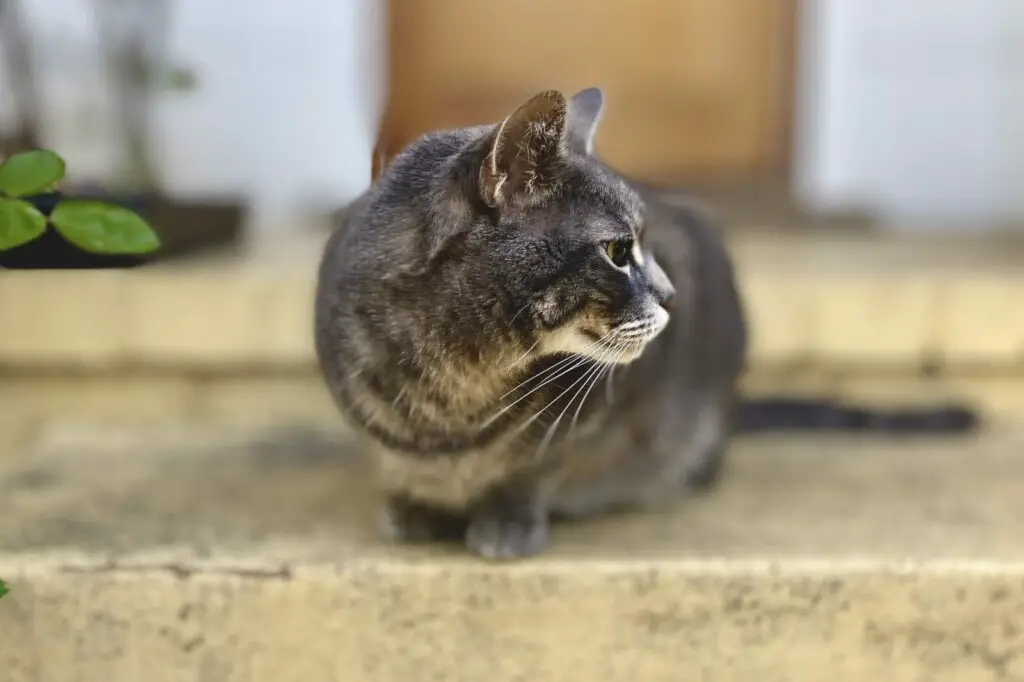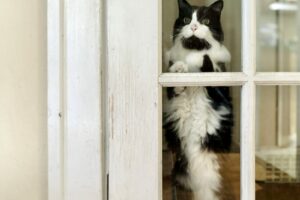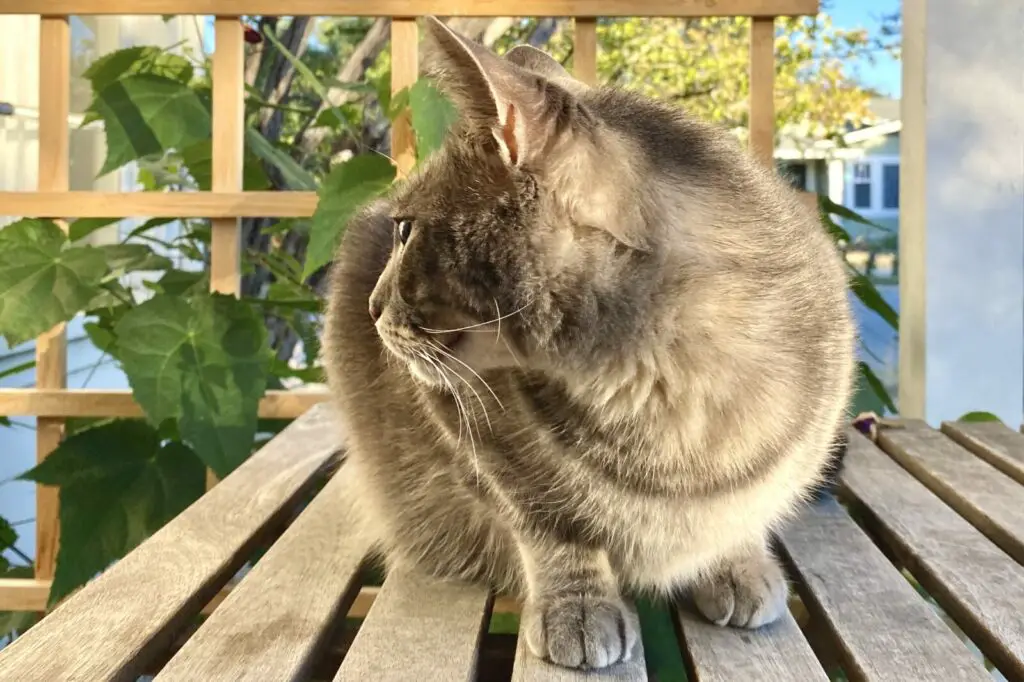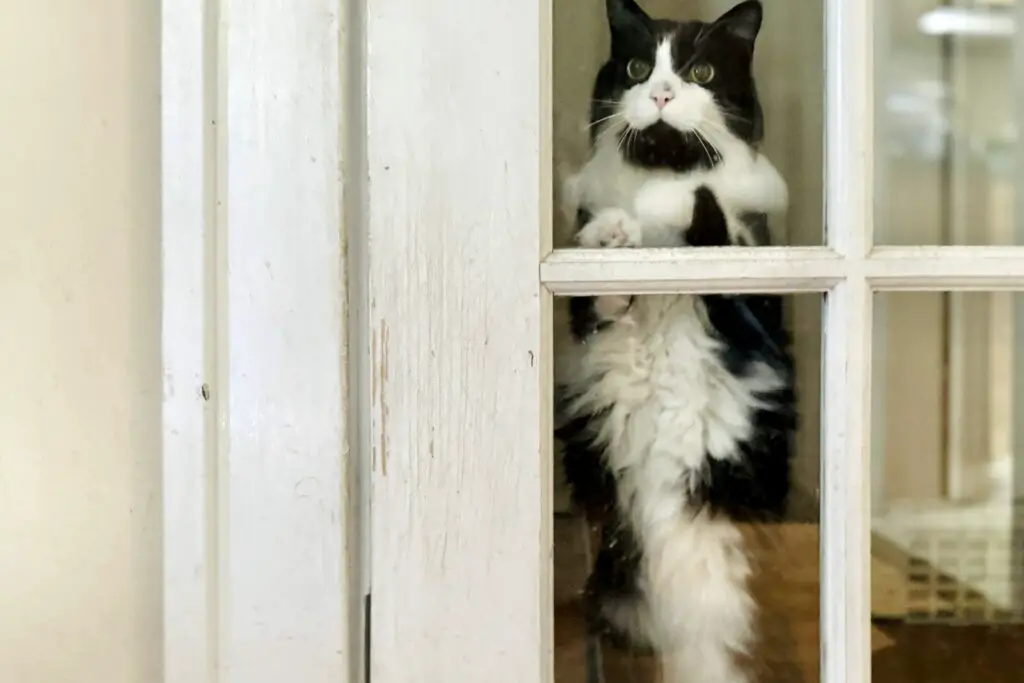Should You Let Your Cat Go Outside? Guide to Pros and Cons
Brief Overview of the Indoor vs. Outdoor Cat Debate
Should you let your cat go outside or keep her strictly as an indoor-only pet?
As you’ve likely already discovered, an internet search on this topic will produce a wide range of opinions and perspectives, with passionate proponents on both sides of the debate.
To start, the most important thing to know is that there are potential risks and benefits for both approaches. In other words, whether you let your cat go outside or not, it will come with both risks and benefits.
So what should you do? This article is intended to help cat owners make an informed decision on whether or not to let their cat go outside.

Table of Contents
Key Takeaways
Key points to consider when weighing whether or not to let your cat go outside
-> Both approaches (indoor-only vs indoor-outdoor) have potential risks and potential benefits
-> On average, indoor-only cats live significantly longer lives than cats that go outside unsupervised
-> Outdoor risks generally involve higher odds of physical dangers and disease
-> The greatest outdoor risks come from unsupervised time outside
-> The safest ways to give your cat outdoor access are by using a catio, or by always supervising the outdoor time
-> Indoor-only benefits are (1) safety and (2) a longer life
-> Indoor risks generally involve higher odds of health problems related to obesity, as well as behavior challenges
-> Indoor risks depend on the environment and interaction you provide for your cat
-> Either way you go, there are many things you can do to minimize risks while meeting your cat’s basic needs and instincts
Importance of understanding the implications of each choice for a cat’s well-being
I look to folks like Brennen McKenzie for answers when it comes to informed opinion and expert analysis of what the science says about pet health issues.
Dr. McKenzie runs the SkeptVet blog. He went on The Body of Evidence podcast and offered the following on what we know about the indoor vs. outdoor cat decision:
Letting cats be outside unsupervised is dangerous, because of potential disease exposure, getting hit by cars, and being attacked or eaten by other animals. Emphasis on unsupervised.
On the other hand, strictly indoor cats are more likely to be obese, and develop certain urinary tract disorders. There are ways to help indoor-only cats be happy and healthy, but you have to be willing to commit to the behavioral enrichment that makes the difference.
Expanding on Dr. McKenzie’s Input
To bring the point home about outdoor risks, outdoor cats statistically have significantly shorter lives on average than indoor-only cats. Obviously, this is because many of the risks of unsupervised outdoor access are life-threatening if they occur.
Another general aspect of unsupervised outdoor access is that you have no control over what your cat is exposed to or what she gets into.
This means that if a neighbor is using poison to eliminate rodents, your cat might eat a poisoned rat. It means that your cat could encounter people who let her into their home, or offer food you’re unaware of.
And you never know if your cat will encounter a person who is cruel to animals, or someone who likes your cat so much that they decide to keep her.
As for indoor-only cats, the obesity risk is serious because of the many health problems and diseases that are associated. Urinary infections can be frustrating to deal with, and they can be fatal in male cats. And if you’re not providing for a cat’s basic needs indoors, you run the risk of more behavior problems, such as scratching furniture and litter box avoidance.
The timing of your decision matters
Ideally, you are thinking this question through before you’ve even adopted your cat.
It’s much easier to never let a cat go out to begin with, than to stop letting a cat go out when she’s already used to it. If you haven’t made up your mind yet, keep your cat indoor-only until you have.
Next, let’s break down the pros and cons, and risks and benefits, of each cat lifestyle in more detail.
Pros/Benefits of the Indoor-Only Cat Lifestyle
1. Longer lifespan on average
All the pros of keeping cats indoor-only that are mentioned above add up to a longer average lifespan. Studies have shown that indoor cats on average live significantly longer than outdoor cats, especially when that outdoor time is unsupervised by owners.
2. Protection from random people
Indoor-only cats are sheltered from the behaviors and actions of other people. These include cruelty to animals, pet theft, food set out for neighborhood strays, and of course the lethal threat of being run over by a car.
In many rural areas, some of these risks are probably lower than in more densely populated areas.
3. Safety from encounters with other animals
Neighborhood dogs pose risks to a roaming cat. And in some cases, like where I live in California, mountain lions and coyotes are also a threat, especially overnight. Cats are territorial animals, and fights between neighborhood cats are also likely to occur. This leads to injury and the spread of infectious disease.
By staying indoors, cats aren’t subject to the dangers of running into any of these other animals. To make extra certain of this, make sure all of your windows and window screens are secured.
4. Protection from diseases and parasites
Cats that live exclusively indoors have a lower risk of contracting contagious diseases such as feline leukemia (FeLV) and feline immunodeficiency virus (FIV), which are commonly spread through contact with infected cats. Additionally, the likelihood of picking up parasites like fleas, ticks, and worms is greatly diminished.
5. Reduced risk of getting lost
An indoor cat’s world is contained, and the risk of them wandering off and becoming lost is virtually nonexistent. The security of knowing where your cat is at all times provides real peace of mind.
6. Controlled diet
It’s good to have total control over your indoor cat’s diet and nutritional intake.
But for me, the big one here is knowing my cat won’t catch a rodent that has been poisoned by a neighbor. Eating a rat that has ingested rat poison is almost always fatal for a cat (or any other predator, such as a fox or owl). Rat poison is actually illegal in some places, like here in California, but people continue to use it anyway.
Cons/Risks of the Indoor-Only Cat Lifestyle
1. Risk of behavioral issues due to confinement and boredom
While indoor cats are protected from external dangers, the lack of outdoor access can mean a less stimulating environment.
Cats have a natural instinct to explore, hunt, and claim territory, and when confined indoors without adequate enrichment, they may exhibit stress or boredom-related behaviors. These can include scratching, aggression, or even anxiety or depression.
2. Need for increased owner involvement and enrichment activities
One common mistake of cat owners is the assumption that cats are totally fine as long as they have food, water, and a clean litter box. But those things are far from the only responsibilities of cat ownership.
Indoor cats require significant daily involvement from their owners so that they remain active, engaged, and healthy.
This includes providing:
- enrichment such as interactive toys, puzzle feeders, and regular playtime that satisfy the instinct to hunt and the need for exercise
- cat trees and scratching posts, which are critical for meeting climbing and scratching instincts, the need for vertical space, and places for napping that feel secure
- window perches for visual stimulation (and opportunities for sun worshiping!)
Owners of indoor cats must be proactive in creating an environment that challenges and entertains their pets to promote their overall well-being and prevent behavior issues.
3. Increased risk for obesity and associated health problems
Without the natural exercise that comes from roaming and hunting, indoor cats are at risk for obesity and its associated health issues, such as diabetes and heart disease.
It is crucial for owners to monitor their cat’s food intake and provide opportunities for physical activity through play and interactive games. Regular veterinary check-ups can help catch any weight-related issues early and keep the cat on a healthy track.
Pros/Benefits of the Outdoor Cat Lifestyle
1. Natural environment for exercise and stimulation
Allowing a cat to venture outdoors provides a dynamic and natural setting for physical exercise that is difficult to fully replicate indoors.
The outdoor environment is rich with sights, sounds, and smells that stimulate a cat’s senses and encourage active behavior. This natural form of exercise helps maintain a cat’s physical health by promoting muscle tone, agility, and cardiovascular health, and reducing the risk of obesity and associated health issues.
2. Opportunity to satisfy natural instincts like hunting and climbing
The outdoors serves as a vast playground where cats can engage in instinctual behaviors such as hunting, climbing, and exploring. This is not only physically beneficial, but also critical for a cat’s mental well-being.
The act of stalking prey, even if it’s just insects or leaves blowing in the wind, provides mental stimulation. Climbing trees or fences allows cats to survey their territory from a high vantage point, which is a natural behavior that fosters confidence and security.
3. Enhanced mental health from environmental enrichment
Again, the great outdoors can promote a foundation of mental health in cats. This is because of the variety of textures, movements, and interactive elements that are available outside.
The psychological benefits of this kind of stimulation are substantial, contributing to a confident and well-adjusted fur pal. However, you can meet these needs for an indoor-only cat if you put in the time to provide what they need.
Cons/Risks of the Outdoor Cat Lifestyle
1. Increased risk of injury or death from accidents or fights
One of the most significant risks associated with allowing cats to roam outdoors is the increased likelihood of physical harm. Traffic accidents are a common cause of injury and fatality among free-roaming cats. Additionally, outdoor cats often come into conflict with other animals, leading to potentially serious injuries from fights with other cats, dogs, or wildlife. Such encounters not only pose a risk to the cat’s physical health but can also lead to costly veterinary bills for their owners.
2. Exposure to diseases, parasites, and poisons
Outdoor cats face a higher risk of exposure to a variety of health threats, including contagious diseases such as feline leukemia virus (FeLV) and feline immunodeficiency virus (FIV), which can be spread through contact with infected animals.
They are also more susceptible to parasites like fleas, ticks, and intestinal worms. Furthermore, outdoor cats may encounter poisons or toxic substances, either through accidental ingestion of contaminated prey or rat poison and insecticides used by neighbors.
3. Potential threat to local wildlife populations
Cats are natural – and absolutely lethal – hunters. When they are allowed to roam outdoors, they are a real threat to all kinds of local wildlife.
Studies have shown that domestic cats are responsible for the deaths of billions of small animals around the world each year. For a fascinating summary on the subject, check out this wikipedia page on global cat predation statistics.
This can have a significant negative impact on local ecosystems, particularly on vulnerable or endangered species.
One of the most significant groups of cats’ victims is birds. The American Bird Conservancy estimates that cats kill 2.4 billion (yes, billion!) birds each year in the United States alone!
4. Legal and ethical considerations in some communities
In certain areas, there may be legal restrictions or community guidelines that limit or discourage allowing cats to roam freely. These regulations are often in place to protect wildlife or due to concerns about the welfare of the cats themselves.
Additionally, ethical considerations arise regarding the responsibility of pet owners to ensure their cats don’t become a nuisance to neighbors. For example, do a search for cats on NextDoor and you’ll likely find folks asking for advice on how to prevent other people’s cats from using their garden as a litter box.
Final Thoughts
The balance we’re after here is of safety on the one hand, and health and wellbeing on the other. Cats with unsupervised and uncontrolled outdoor access are significantly less safe than strictly indoor cats.
But there are safe ways to give your cat outdoor opportunities. In the next article, we discuss options and safe solutions to the indoor vs outdoor cat dilemma. I also share how I’ve chosen to handle things for my own cats.



